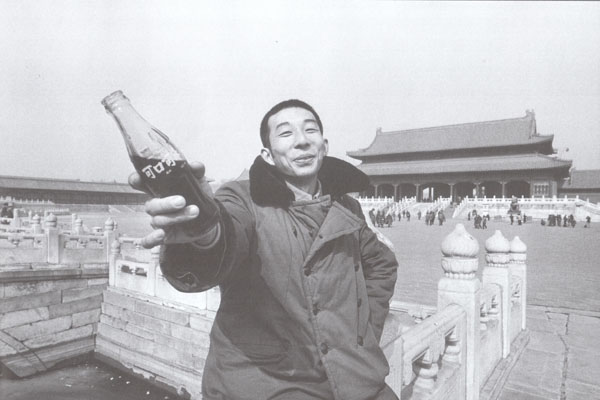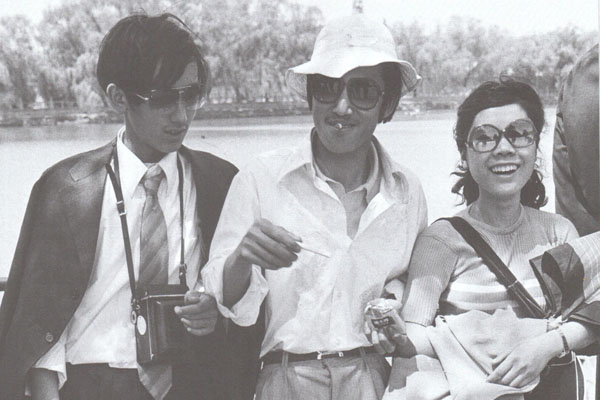
One of his most famous works showed workers taking Chairman Mao's portrait off the facade of the National Museum of Chinese History on the east side of Tian'anmen Square, illustrating the end of an era.
He went on to photograph people trying on sunglasses at a commodities fair, aspiring artists presenting their creations along a public wall, and young lovers managing to have a moment of intimacy without the luxury of privacy.
 |
|
Some of Liu's most famous photographs reveal details of Chinese people's daily lives — how they live, leisure and love.Photos by Liu Heung Shing |
"I keep my eyes and ears open,"the photographer told the media at the opening of China Dream, Thirty Years in Shanghai.
"I hope I can feel China's pulse in every period and show its highest height and lowest low with my pictures when words fail to do so.”
In recent years Liu has devoted lots of time and effort to compiling photo documentaries about China. His book, China, Portrait of a Country, has been translated into six languages since 2008 and sold more than 250,000 copies all over the world.
In 2010, Liu worked with Briton Karen Smith, a critic and curator of contemporary art, to publish Shanghai: A History in Photographs 1842-Today.
Smith is also curator of Liu's exhibition at China Art Museum in Shanghai.
Photography is greatly different nowadays, compared with the 1970s when Liu started his career in China, Smith says.
One could take no more than 36 pictures with a roll of film and the photographer had to keep his wits about him whenever he was shooting.
 |
|
Some of Liu's most famous photographs reveal details of Chinese people's daily lives — how they live, leisure and love.Photos by Liu Heung Shing |
Sometimes one might capture a great shot by luck, but most of the time, it is achieved through keen perception and understanding of the time and place he is working, Smith says.
Nowadays everybody takes pictures with digital cameras and mobile phones. Photography is no longer as reliable as it can be digitally altered using computer program Photoshop.
Liu says he belonged to the last generation of photojournalists. Now agencies and publications will dispatch their staff members wherever news happens. Journalists rarely have the luxury of living for years in a country, submerging into the local culture and lifestyle.
"I got to see China and digest what I saw through photography,"Liu says.
"I hope to present our common memories for the past 30 years, when China's drastic changes and development has the whole world impressed.
"It's impossible to present it with dry statistics of GDP, and that's not my job,"Liu says.
His photography of details of daily life — how people live, leisure and love — filled the giant gaps between the dry numbers of historic narration. It is the details and personal feelings that connects to all human beings, and makes his pictures special, Smith says.
